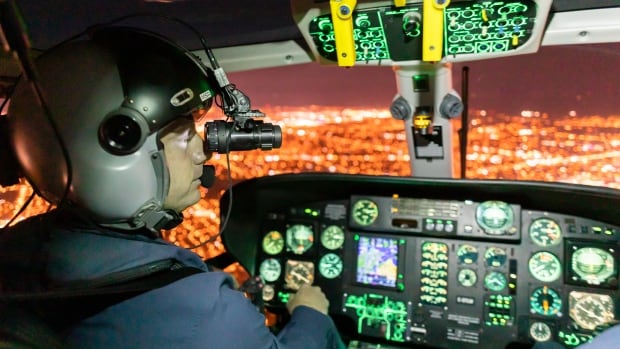The Night Hunter's Arsenal: Equipment And Tactics For Nighttime Hunting

Table of Contents
Essential Night Hunting Equipment
Night hunting presents unique challenges, demanding specialized equipment to overcome the limitations of darkness. Investing in high-quality gear is crucial for a safe and successful nocturnal hunt. Let's explore the essential components of a night hunter's arsenal.
Illumination Devices: Seeing Without Being Seen
Proper illumination is paramount, but it's crucial to avoid spooking your target. The wrong light can ruin your hunt before it begins.
- Red light flashlights: These offer superior low-light visibility without disturbing nocturnal animals as much as white light. However, their range is often limited. Consider the battery life and durability when selecting a red light flashlight for night hunting.
- Headlamps: A headlamp provides hands-free illumination, leaving you free to navigate and handle your weapon. Choose a headlamp with adjustable lumens and beam patterns; a wider beam is ideal for navigating, while a focused beam is better for identifying targets. Look for models with a red light setting for stealth.
- Infrared illuminators: These are invisible to the naked eye but illuminate the area for night vision devices, significantly extending their range and effectiveness, especially in complete darkness. They're particularly useful for predator hunting at night.
Night Vision Technology: Piercing the Darkness
Night vision technology opens up a whole new world of hunting possibilities. Several types offer varying performance and price points.
- Digital night vision: This is generally more affordable than Gen-series night vision but may offer lower resolution and less detail. However, digital technology is rapidly advancing, providing good value for budget-conscious hunters. It's a great option for deer hunting at night, particularly in areas with moderate light pollution.
- Gen 1, Gen 2, and Gen 3 night vision: These generations represent a progression in image intensifier technology. Gen 3 offers superior image quality, low-light sensitivity, and resolution compared to Gen 1 and Gen 2, but it comes at a significantly higher price. The choice depends on your budget and the level of performance needed.
- Thermal imaging: This technology detects the heat signatures of animals, providing clear images even in complete darkness, fog, or smoke. Thermal imaging is exceptionally effective for predator hunting, allowing you to locate animals regardless of their camouflage or the ambient light.
Critical Hunting Gear Adaptations: Optimizing for Nighttime Use
Adapting your standard hunting gear is crucial for nighttime success. Minor modifications can greatly enhance your performance and safety.
- Silent clothing and footwear: Noise is your enemy at night. Invest in clothing and footwear designed to minimize sound; this often involves soft materials and careful construction. Consider using camouflage patterns designed for low-light conditions.
- Specialized backpacks: A backpack designed for silent operation, with quiet zippers and straps, is essential for carrying your gear without unnecessary noise. Choose a backpack that fits your body comfortably and allows for easy access to your essentials.
- Weapon modifications: Adding accessories such as weapon-mounted lights or lasers can dramatically improve target acquisition in low-light conditions. Ensure that any modifications are securely attached and do not interfere with the operation of your firearm. Proper zeroing is paramount when using these additions.
Effective Night Hunting Tactics
Mastering nighttime hunting involves more than just acquiring the right equipment; it necessitates a deep understanding of nocturnal animal behavior and employing effective hunting tactics.
Understanding Animal Behavior at Night: Predicting Your Prey
Nocturnal animals exhibit different behaviors than those active during the day.
- Predator vs. prey behavior: Predators often become more active at night, hunting under the cover of darkness. Prey animals, conversely, may become more cautious and alter their movement patterns. Understanding these dynamics is key to successful night hunting.
- Scent control strategies in low light: Scent control remains crucial at night. The wind can carry your scent further, as animals rely more on their sense of smell in the dark. Employ scent-eliminating clothing and other strategies to mitigate your scent.
- Choosing optimal hunting locations considering moon phases and terrain: Moon phases significantly impact visibility at night. A full moon provides ample illumination, while a new moon requires more reliance on artificial light. Consider terrain that offers natural cover and concealment.
Stealth and Approach Techniques: Moving Quietly in the Dark
Silent movement is paramount for successful night hunting. Even the smallest noise can spook your prey.
- Wind direction awareness: Always hunt downwind to avoid alerting animals to your presence through your scent.
- Utilizing natural cover: Use trees, bushes, and other natural elements to mask your movements and break up your silhouette.
- Slow and deliberate movements: Avoid jerky or sudden movements. Move slowly and methodically to minimize noise and vibration.
Shot Placement and Ethical Considerations: Precision in Low Light
Precise shot placement is crucial at night. The reduced visibility demands careful aim and shot execution.
- Importance of proper zeroing: Ensure your weapon is accurately zeroed for your chosen night vision or thermal imaging device at the range you anticipate shooting.
- Ethical considerations for night hunting: Always adhere to local hunting regulations and ethical hunting practices. Only take shots that you are confident in making a clean kill.
- Game recovery techniques: Having a reliable light source and knowledge of game tracking are vital for efficient and ethical game recovery in the dark.
Conclusion
Successfully navigating the challenges of night hunting hinges on understanding both the specialized equipment and the unique tactics required for success. This guide has outlined the essential tools, from powerful night vision devices and thermal imaging technology to crucial gear adaptations, while also emphasizing the importance of mastering stealth techniques and understanding animal behavior in low-light conditions. Remember, responsible and ethical nighttime hunting practices are paramount. By mastering the art of nighttime hunting, you unlock a whole new dimension of the hunting experience. Invest in the right equipment and hone your skills, and embrace the thrill of the night hunt with the knowledge you've gained on The Night Hunter's Arsenal. Start planning your next nighttime hunting expedition today!

Featured Posts
-
 Ayk Mdah Ne Tam Krwz Ke Jwte Pr Pawn Rkha Kya Hwa
May 11, 2025
Ayk Mdah Ne Tam Krwz Ke Jwte Pr Pawn Rkha Kya Hwa
May 11, 2025 -
 Avestruz Ataca A Boris Johnson Y Su Familia En Texas
May 11, 2025
Avestruz Ataca A Boris Johnson Y Su Familia En Texas
May 11, 2025 -
 Le Clash Persiste Chantal Ladesou S En Prend Une Nouvelle Fois A Ines Reg
May 11, 2025
Le Clash Persiste Chantal Ladesou S En Prend Une Nouvelle Fois A Ines Reg
May 11, 2025 -
 Jessica Simpsons Struggle The Pressure Of Success Alongside Britney And Christina
May 11, 2025
Jessica Simpsons Struggle The Pressure Of Success Alongside Britney And Christina
May 11, 2025 -
 Schoofs Absence Highlights Controversy Surrounding Fabers Honours Refusal
May 11, 2025
Schoofs Absence Highlights Controversy Surrounding Fabers Honours Refusal
May 11, 2025
